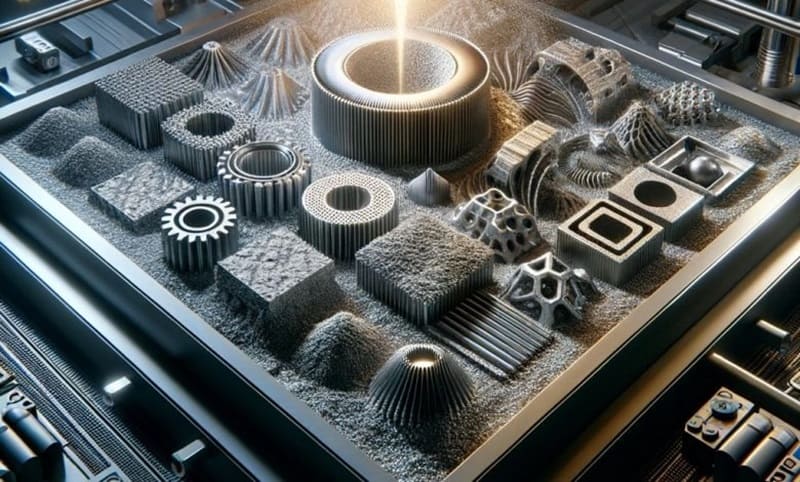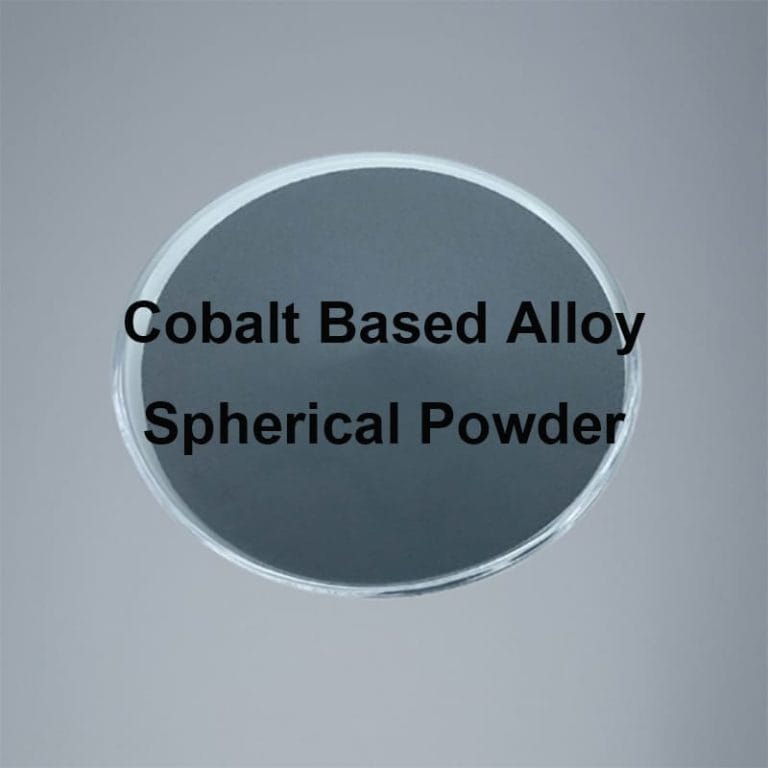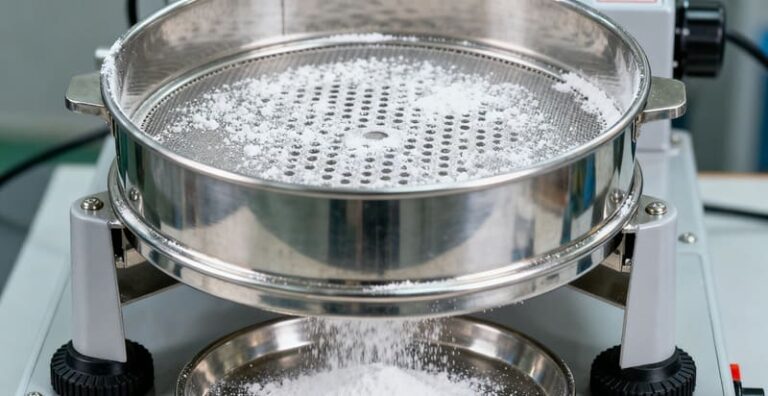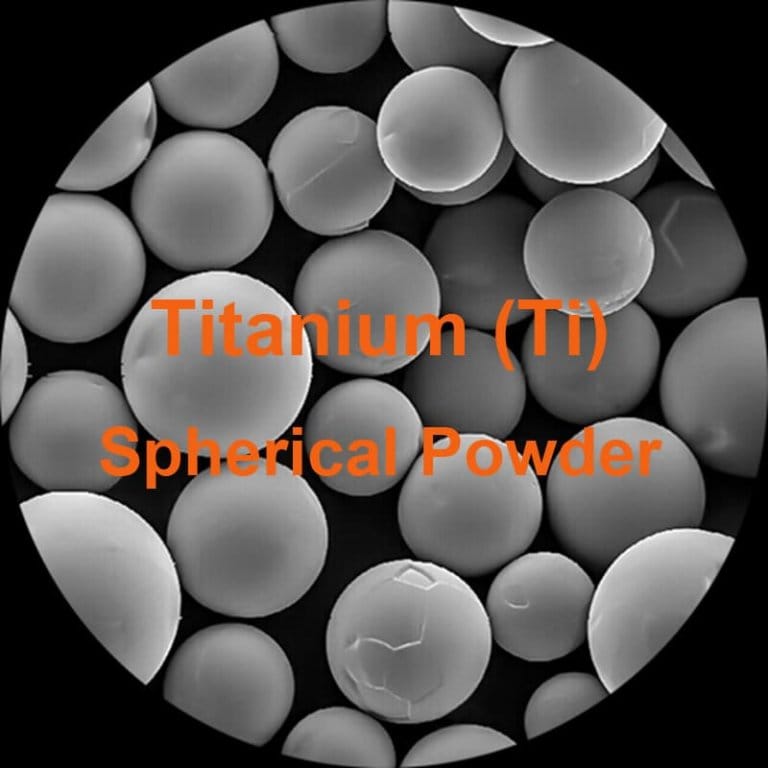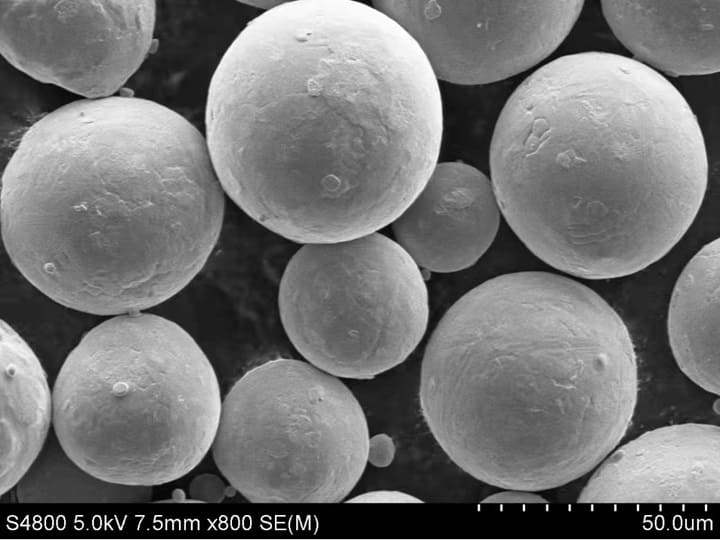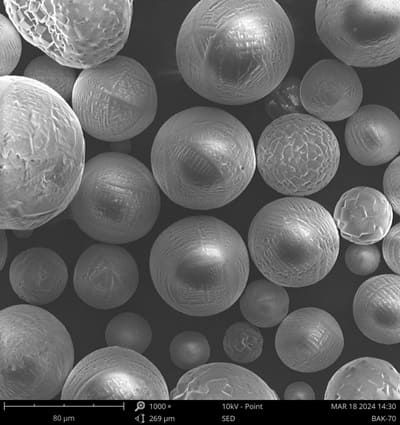Top 4 Advanced Manufacturing Techniques for Spherical Powder Production
The manufacturing techniques of spherical powders generally include Water Atomization (WA), Gas Atomization (GA), the Plasma Rotating Electrode Process (PREP), and Radio Frequency (RF) Plasma Spheroidization.
1. Gas Atomization (GA)
Gas atomization uses high-speed gas streams to break up molten metal into small droplets, which then solidify into powder. This method is popular for producing fine particle sizes, high sphericity, and high purity. It is the primary method used for producing metal powders for 3D printing.
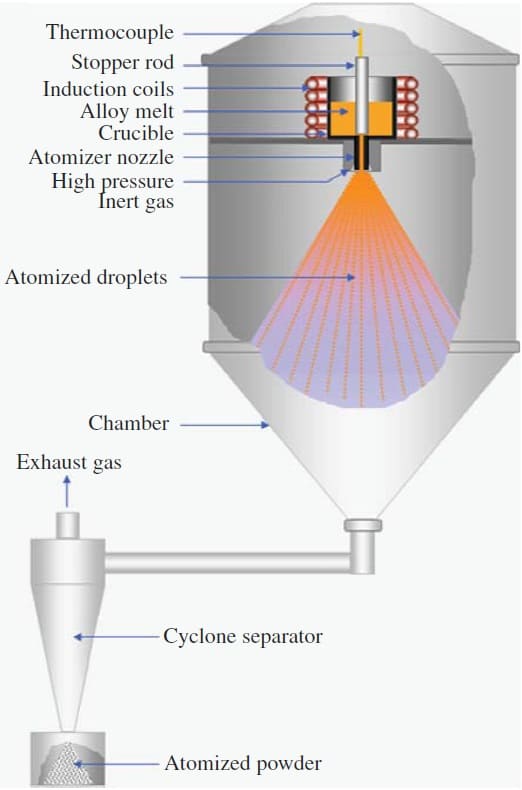
Gas atomization can be categorized into three types based on the heating elements:
A. Vacuum Induction Melting Inert Gas Atomization (VIGA): In this method, alloy materials are melted in a crucible. The molten metal flows through a tundish nozzle to the atomizing nozzle, where it is broken up by supersonic gas into fine droplets. This is widely used for producing powders from iron-based alloys, nickel-based alloys, cobalt-based alloys, aluminum-based alloys, and copper-based alloys. This method can be applied to Fe-Co-Ni-Cr-Al High-entropy Alloy and 316L Stainless Steel.
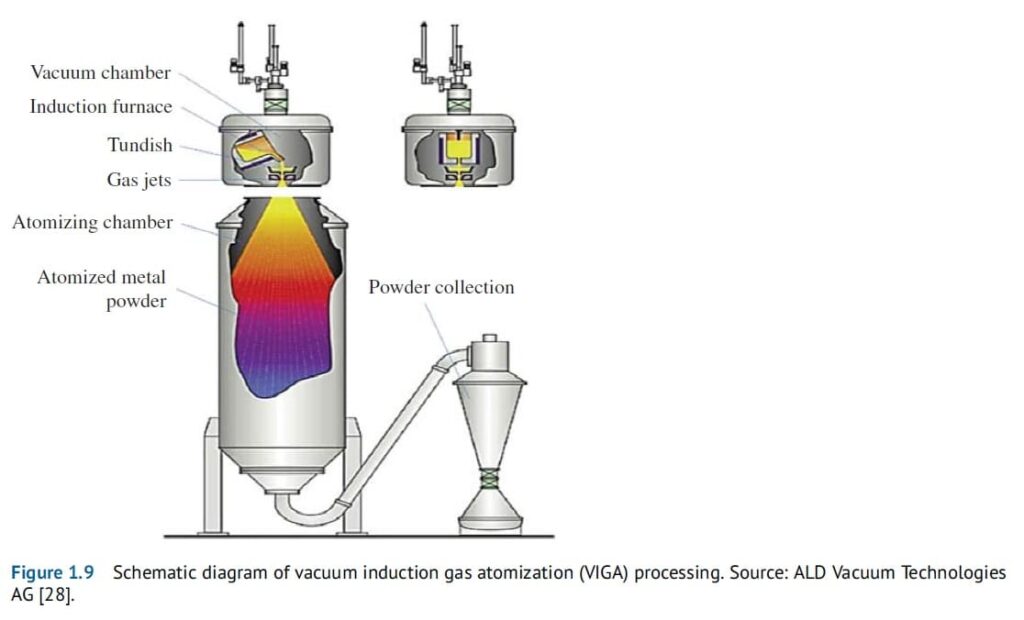
B. Electrode Induction Melting Gas Atomization (EIGA): This combines gas atomization with electrode induction melting. A pre-alloyed metal electrode rod is melted inside a ring-shaped induction coil, and the molten metal droplets fall into a gas atomization nozzle, where they are atomized using inert gas. This method is effective for reactive metals and alloys, as well as refractory materials like titanium alloys and zirconium. This method can be applied to NiTi Shape Memory Alloy (Nitinol) and Ti-6Al-4V Titanium Alloy.
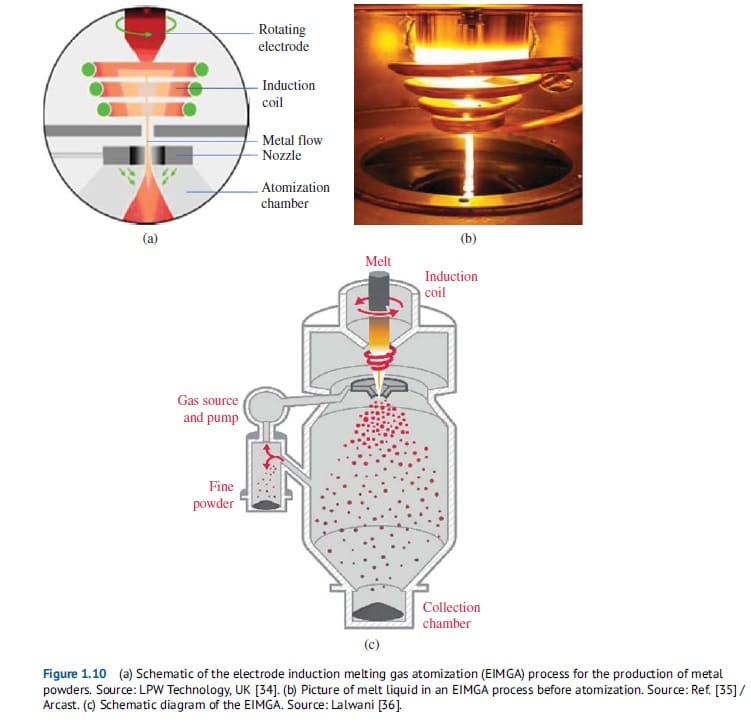
C. Plasma Atomization (PA): Plasma torches are used to create a high-temperature plasma focus to melt metal wire rapidly. The molten metal is dispersed into fine droplets, which solidify into powder. This method is commonly used for producing titanium and titanium alloy powders but can be limited by the need for wire feedstock, raising production costs.
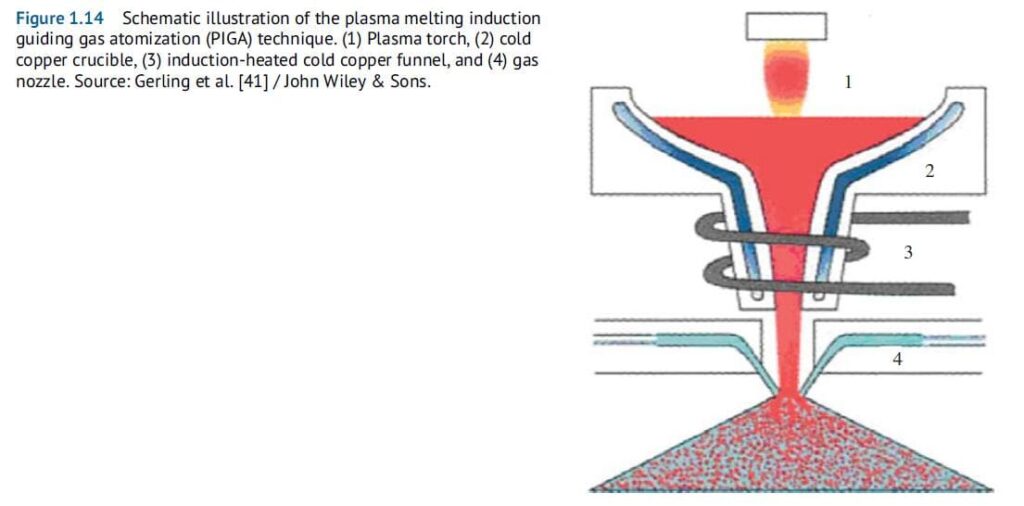
2. Plasma Rotating Electrode Process (PREP)
Plasma Rotating Electrode Process (PREP) is a technique used to produce metal powders through centrifugal atomization, where a high-speed rotating electrode rod is melted by a plasma torch. This method results in powders with benefits such as minimal non-metallic inclusions, absence of satellite particles, and excellent flowability.
The procedure begins with a plasma torch melting the end of the high-speed rotating electrode rod, causing it to form multiple liquid films. These molten films are then broken up into droplets by the centrifugal force generated by the rapid rotation of the electrode. The droplets solidify and cool down in an inert gas environment, forming spherical powders due to surface tension.
The particle size of the powder typically ranges from 50 to 350 μm, and the size decreases as the electrode’s rotation speed and diameter increase.
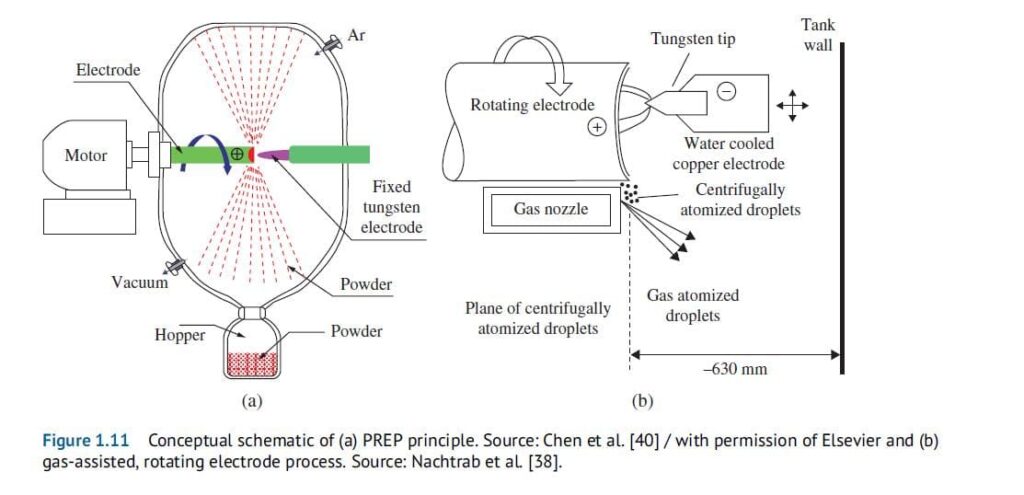
Applications:
PREP is particularly effective for producing metal powders such as Ni-based alloys, Ti alloys, stainless steel alloys, and various refractory metals. The high-quality powders produced are commonly used in advanced manufacturing processes like electron-selective melting, laser melting, cladding, coating, and Hot Isostatic Pressing (HIP).
Key Features of PREP Powders:
- Low oxygen and impurity content (high purity)
- Smoothly spherical and free of satellite particles
- Narrow particle size range
- Excellent flowability and high apparent/packing density
- Minimal internal porosity
While the powders produced by PREP are generally spherical, they tend to be coarser than those from gas atomization. However, various process improvements are being explored to produce finer powders. This technique is especially beneficial for creating powders of reactive and refractory materials.
This method can be applied to Inconel 625 Nickel-Based Alloy and Inconel 718 Nickel-Based Alloy.
3. Water Atomization (WA)
The high-pressure Water Atomization (WA) technique marks a notable advancement in the production of fine atomized powders, particularly in the 10 μm range. The demand for these finer powders is steadily increasing, driven by the growing adoption of powder injection molding as a key manufacturing method. High-pressure WA is expected to play a pivotal role in meeting the demand for cost-effective powders in this particle size category. However, the morphology of the resulting powders may present certain challenges.
High-pressure WA excels in producing fine powders and offers flexibility in generating a wide range of particle sizes, size distributions, and apparent densities. As the water pressure during atomization increases, particle sizes tend to decrease, while the size distribution generally broadens. Studies on water-atomized 316-L stainless steel powders have shown that higher atomizing water pressures, ranging from 10 to 150 MPa, consistently yield smaller average particle sizes.
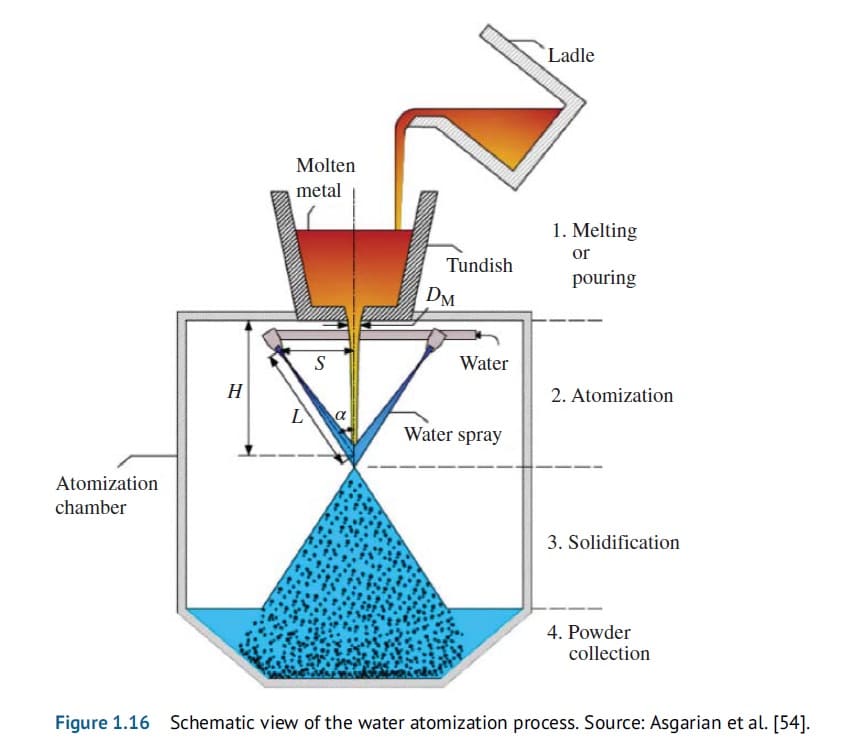
This method can be applied to Iron-Based High-Temperature Alloys (18Ni300, Incoloy A-286) and Cobalt-Based High-Temperature Alloys (CoCrW Alloy, CoCrMoNi Alloy, Haynes 188).
4. Radio Frequency (RF) Plasma Spheroidization
RF plasma technology is a highly efficient spheroidization method, characterized by its high energy density, intense heating capability, and large plasma arc volume. A significant advantage of RF plasma is the absence of electrodes, which eliminates contamination from electrode evaporation. The process begins with ionizing an inert gas, such as argon, using a high-frequency power source to generate a stable, high-temperature plasma. Irregularly shaped raw powders are introduced into the plasma torch via a carrier gas, like nitrogen, using a powder feeder. The powder particles absorb intense heat, melting rapidly as they pass through the plasma. Influenced by surface tension, the molten particles coalesce into spherical shapes and are quickly cooled in an inert atmosphere. The resulting powders are then collected in a receiving chamber.
RF Plasma Technology Benefits and Challenges
Powders produced through RF plasma spheroidization exhibit a regular spherical shape, high sphericity, smooth surfaces, and excellent flowability. This method is particularly suitable for manufacturing powders of refractory metals with high melting points, such as tantalum, tungsten, niobium, and molybdenum. However, the extended heating cycle can lead to the evaporation of volatile elements. Additionally, the large surface area of irregular powders can result in higher oxygen content in the final product.
This method can be applied to Chromium (Cr), Molybdenum (Mo), Tantalum (Ta), and Niobium (Nb).
Comparative Analysis of Spherical Powder Production Methods:
- WA Method: Water atomization is cost-effective and environmentally friendly but produces powders with lower sphericity and higher oxygen content. It is best for mass production of powders from non-reactive metals.
- VIGA Method: VIGA is efficient, offers a wide range of alloys, and provides good control over powder size. It is popular for additive manufacturing powders.
- EIGA Method: EIGA is advantageous for reactive metal powders, providing clean melting without contamination from crucibles. It is ideal for titanium alloys in selective laser melting (SLM).
- PA Method: Plasma atomization can produce powders from high-melting-point alloys but requires wire feedstock, which increases costs. It is less suitable for producing powders from hard-to-deform alloys.
- PREP Method: PREP yields spherical powders with high purity and low oxygen content. However, it typically produces coarser powders, limiting its application to fine powder-based techniques like SLM.
- RF Plasma Spheroidization: RF plasma spheroidization is effective for creating dense, spherical powders from irregular shapes but can lead to higher oxygen content and longer heating cycles.
Each method has its specific advantages and limitations, depending on the desired powder characteristics and application needs.
Advanced Powder Tech is a professional supplier and manufacturer of top-notch spherical powder products, offering competitive prices and customized solutions according to specific requirements for various applications. If you’re interested, feel free to contact us at sales@heegermaterials.com for a quote, and we guarantee a response within 24 hours.

